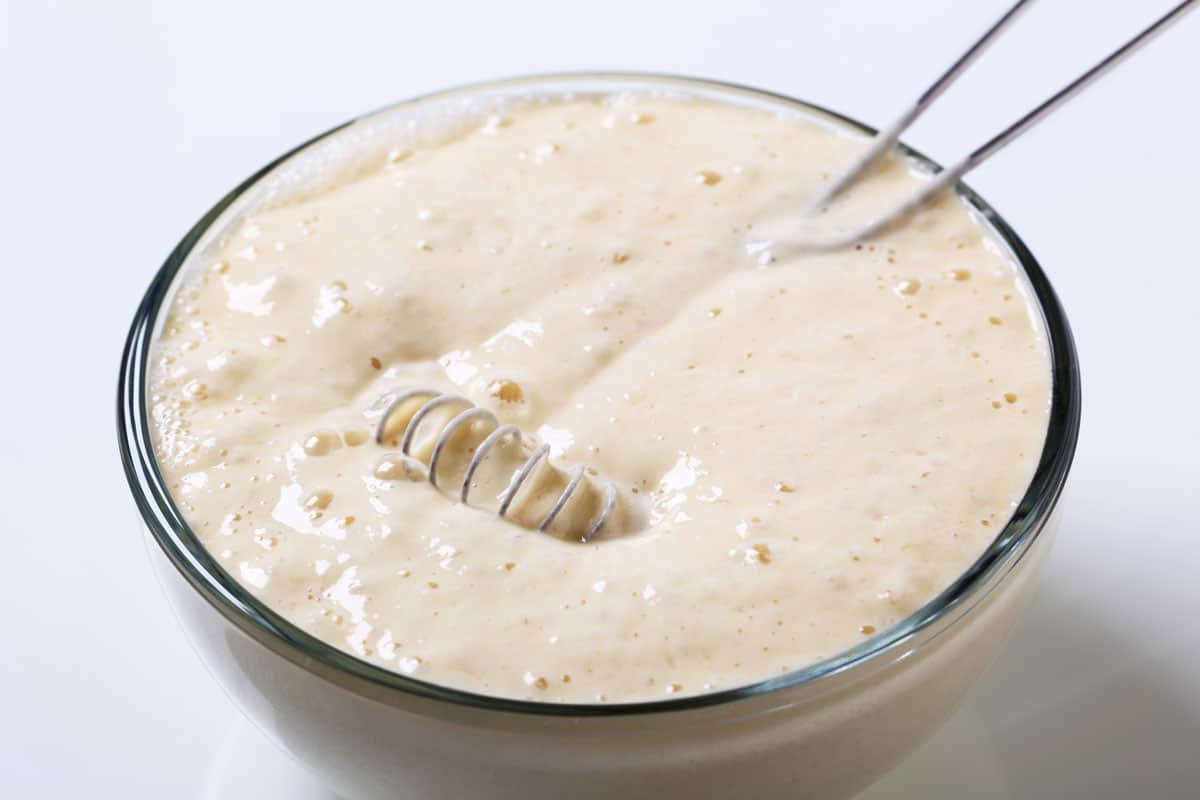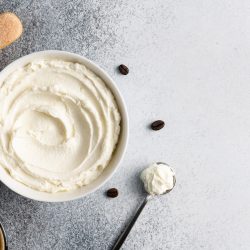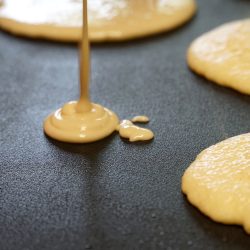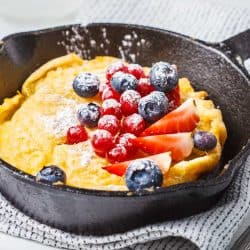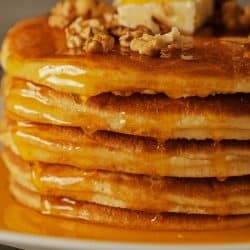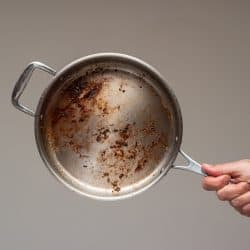Soft, pillowy pancakes are a staple of any brunch spread. But what should you do if your pancake batter is turning out thick and sticky? We've scoured recipe books and investigated the food science to find the prescription for this sticky situation.
These are the main reasons pancake batter turns thick and sticky, and how to fix each:
- Too much flour
- Add more water (or other liquid ingredient)
- Over-mixed batter
- Let the batter rest for thirty minutes, then add more liquid and baking powder
- Too much egg
- Scale up the other ingredients in proportion with the amount of egg
In this article, we'll take a deeper look at each of these pancake problems, how to solve them, and how to prevent them from happening with your future flapjacks. We'll also take a look at what gives pancakes their rise, how it works, and even some alternatives.

How to fix thick and sticky pancake batter
Some might say that perfect pancakes are all alike, and flawed flapjacks are all flawed in their own way. If your pancake batter is thick and sticky, several causes could be your culinary culprit.
Fortunately, pancakes are forgiving. If you can identify what's causing your batter woes, you should be able to fix it with just a simple tweak.
Let's look at some of the most common causes of thick and sticky batter and how to fix each.
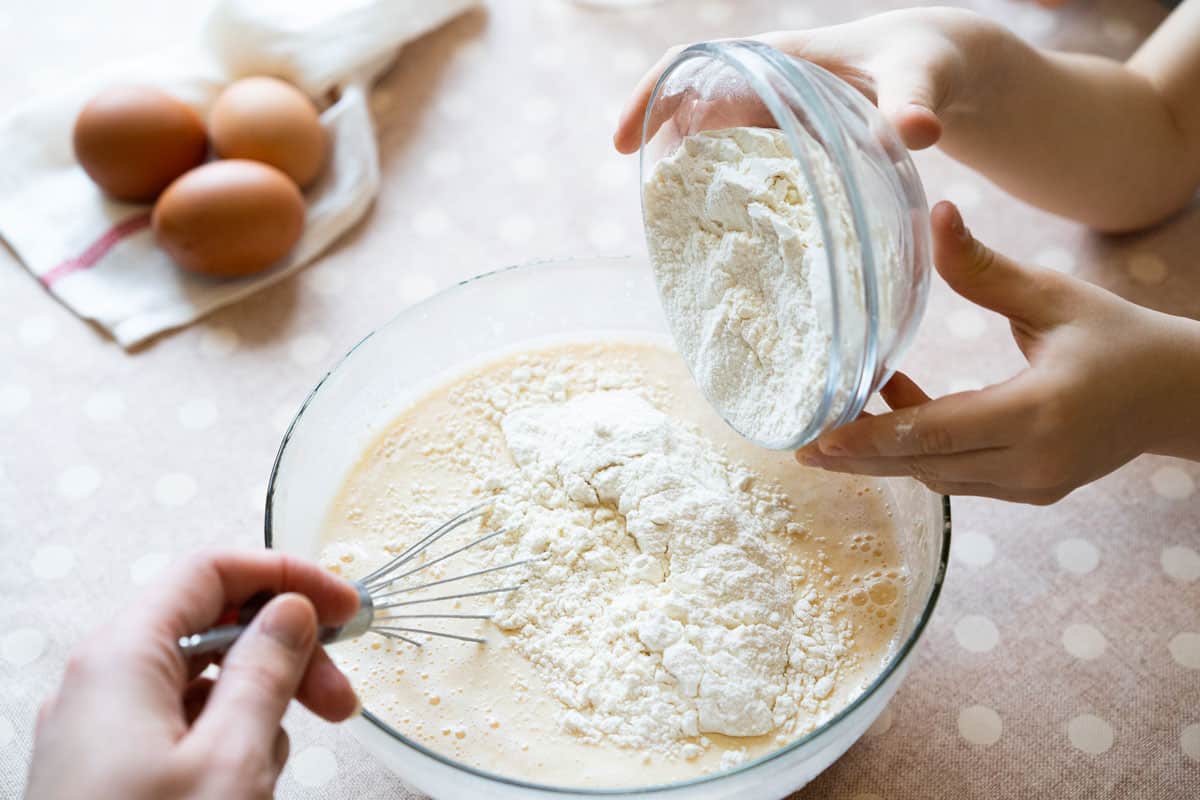
How to fix a pancake batter with too much flour
Adding too much flour is one of the most reasons pancake batter turns out too thick. Fortunately, it's also the easiest to solve: add more of your wet ingredient.
Different recipes call for different liquid ingredients. A box mix may just need water, but many from-scratch recipes use milk or sometimes buttermilk. Simply add more of whatever liquid your recipe calls for until you reach the desired consistency.
If you are out of milk or buttermilk, you can add water instead. The small amount needed to thin out the batter shouldn't have a noticeable effect on the flavor of your pancakes. In fact, water will help thin your batter faster, since it contains less fat and protein than milk or buttermilk.
Remember to only add a little bit at a time. Pancake batter can go from too thick to too thin faster than you might expect.
You can check that you've got the right ratio by dipping a spoon in the batter. When you pull it out, the batter should cling to the spoon but drip freely as well. If it clings too much or flows instead of dripping, add more liquid or flour respectively.
Adding too much flour is a common problem for pancake makers because many recipes use volume measurements. Different quantities of flour can fit in a single cup depending on how tightly packed it is.
You can convert your recipe to weight measurements and use a kitchen scale for more precise cooking in the future. Traditional Oven has a volume-to-weight calculator for flour here.
How to fix over-mixed pancake batter
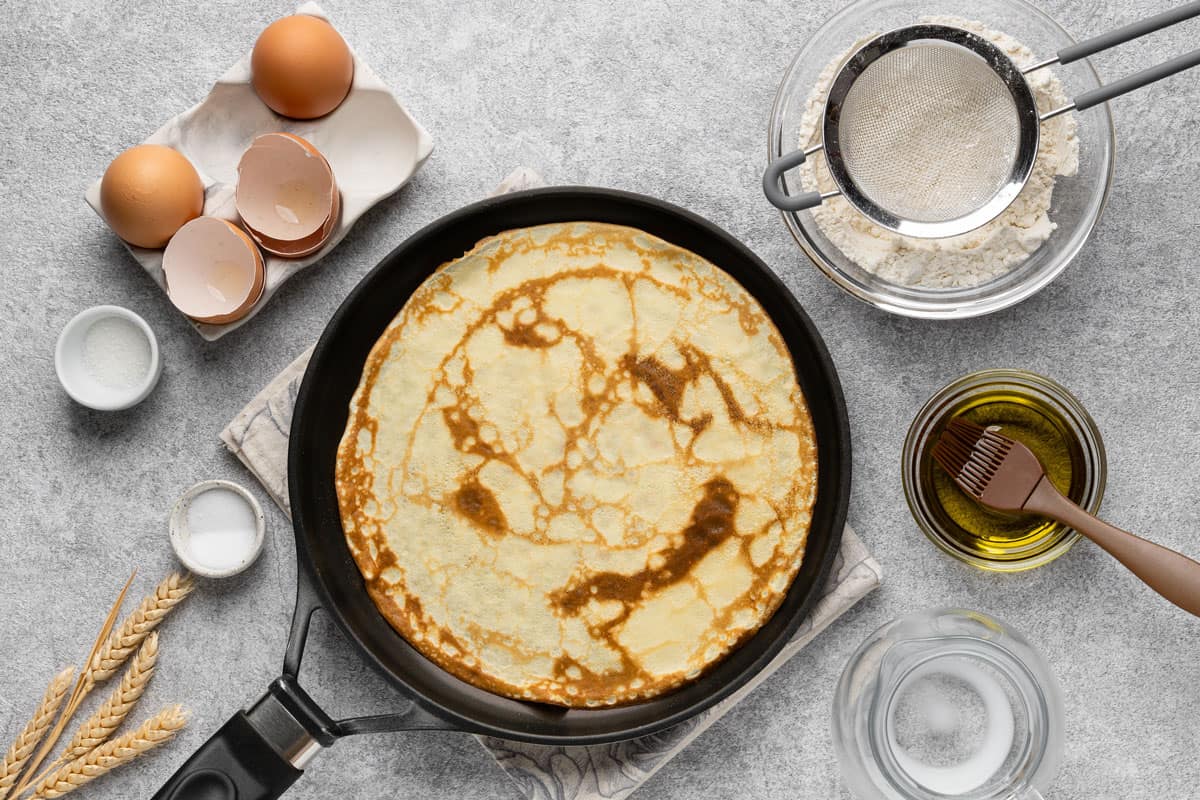
Stirring the batter too long is another repeat offender when it comes to overly thick and sticky batter.
It's easy to understand why we do it. When we see lumps or imperfections in the batter, we want to break them up and smooth them out.
Unfortunately, mixing your ingredients too much can lead to two major problems. You'll release the bubbles created by your leavening agent and strengthen the gluten in the flour. Both of these can lead to your batter, as well as your pancakes, being dense and tough.
With over mixing, an ounce of prevention is worth a pound of cure. Simply mix your batter until there are no more floury spots at the bottom of the bowl and the flour and wet ingredients are just integrated. This means tolerating some lumps.
If you suspect your batter is over-mixed, you can still use it. Your pancakes may turn out overly dense if you use it as is, but you can improve the results by resting and tweaking the batter.
Let the batter rest for thirty minutes so the gluten relaxes. Then, thin the batter with a little water and add more of your leavening agent (baking powder or baking soda, depending on the recipe).
Just be sure you barely stir your batter when adding these. Stirring too much will land you back on square one.
How to fix a batter with too much egg
Having too much egg in your batter can also cause it to be overly thick, even custard-like. This might be because your eggs are simply much larger than those your recipe calls for or you may have just accidentally added an extra one.
This problem is less common and it's also very easy to fix; simply scale up your recipe. Add more flour, sugar, leavening agent, and liquid ingredients to match.
This may mean busting out your calculator to make sure you keep a good ratio of your dry and liquid ingredients, but on the bright side, you'll have even more pancakes when all is said and done.

What makes pancakes fluffy and rise?
Pancakes come in a variety of styles, but there are two words that describe the iconic American pancake: light and fluffy. But how do pancakes get that way?
The main heroes we should thank for this breakfast staple are chemical leavening agents. While most types of bread use yeast to rise, pancakes rely on chemical leaveners, specifically baking soda or baking powder.
Baking soda, scientifically known as sodium bicarbonate, is a chemical with a wide variety of applications. When baking soda comes into contact with an acid, it releases carbon dioxide. This is what makes those baking soda and vinegar volcanoes work, but also what gives rise to many pancake recipes.
Baking powder contains baking soda, as well as a dry acidic ingredient. When baking powder is dry, these ingredients don't interact. But once baking powder gets wet, the acid and baking soda interact, leading to the same release of carbon dioxide.
Your pancake batter traps carbon dioxide bubbles, and as these bubbles expand on your griddle, your pancakes get their characteristic rise.
Baking powder is the ingredient included in most self-rising flours and packaged pancake mixes that allows them to get fluffy. Learn how to make pancakes with self-rising flour by reading our article: Can You Make Pancakes with Self Rising Flour?
Should I use baking powder or baking soda to make pancakes?
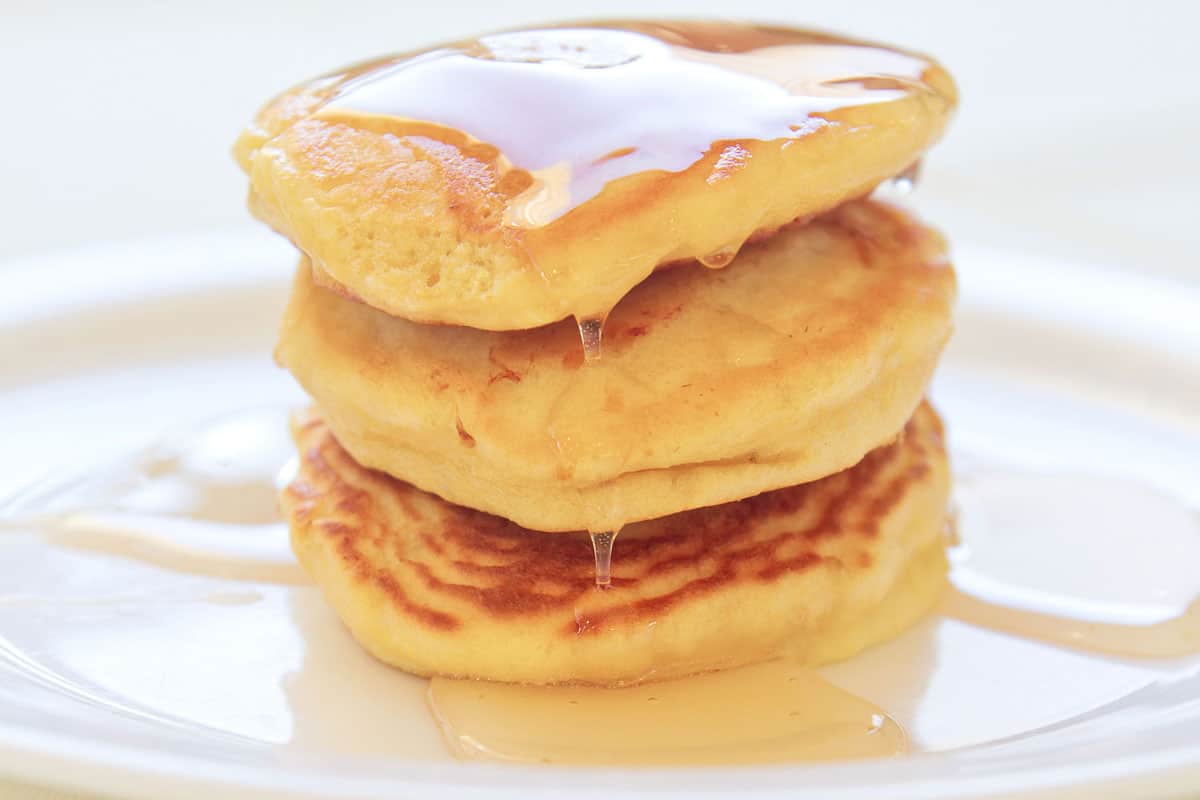
When making pancakes, most recipes will call for at least baking powder. This is because you can use baking powder without the need to add any acidic ingredients.
However, many recipes also call for some baking soda. This is especially true of buttermilk pancakes, because buttermilk is acidic and interacts with baking soda. This buttermilk pancake recipe, from The New York Times, uses a combination of baking powder, baking soda, and buttermilk.
Other acids might also be used, such as the lemon juice in this lemon pancake recipe from Just So Tasty.
How long does baking powder stay good?
Baking soda lasts almost indefinitely, but the same isn't true of baking powder. Even in their dry state, the baking soda and acid will interact a little bit in baking powder, especially once opened and exposed to air.
Unopened baking powder will still be usable until the printed expiration date, often eighteen months after packaging. Once opened, though, baking powder should be used within six months. Old baking powder will be mostly inert and it won't supply the rise you and your pancakes crave.
Keep your baking powder stored sealed in a cool, dark, dry place. Do not store baking powder in the refrigerator, as the humidity and condensation can cause it to react prematurely.
Can you make pancakes without baking powder?
While the vast majority of pancake recipes call for baking powder, there are ways you can make great pancakes without it.
The most common method is to make a souffle pancake. This style of pancake is particularly popular in Japan and Korea but has recently become a popular (and very photogenic) breakfast option in the US.
To make a souffle pancake, you must separate your eggs. You'll combine the egg yolks with the other ingredients (except sugar), then whisk the egg whites and sugar together until they approach stiff peaks.
Then you'll gently fold the egg whites and the other ingredients together. The air trapped in the egg whites makes sure these pancakes stay perfectly light and fluffy.
Some recipes for souffle pancakes still call for some baking powder, but this recipe from Baker Betty completely omits the chemical leavening.
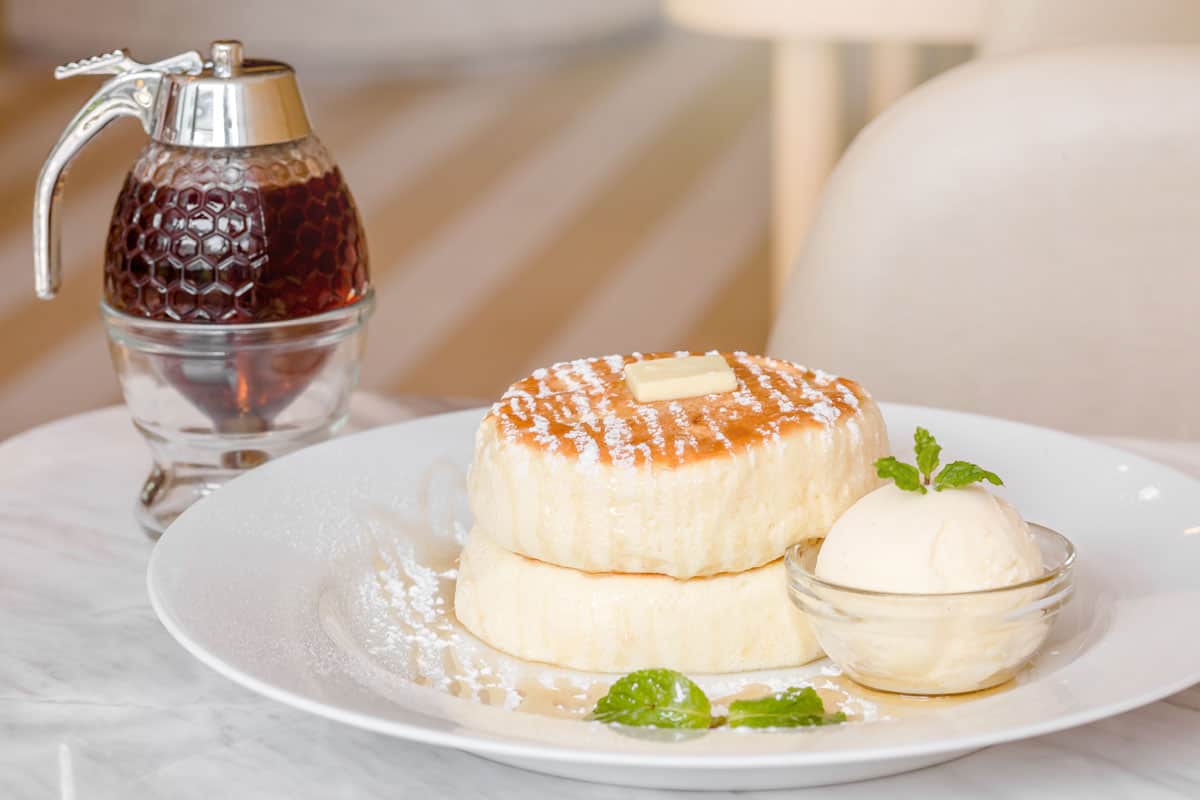
Wrapping Up
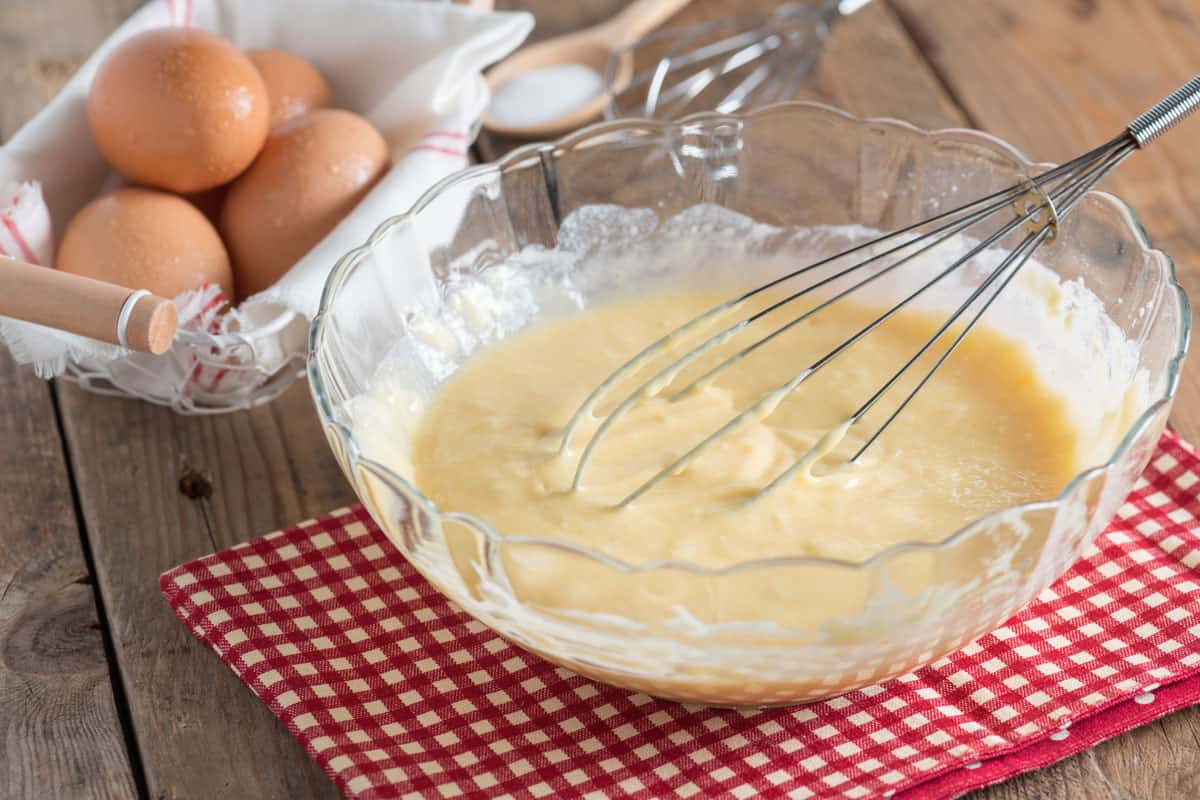
Pancakes come about as close to being universally loved as any food. They are an easy and welcome part of any home cook's breakfast repertoire.
Now you know how to fix your pancake batter when it starts running thick. You also know more about using baking powder and baking soda to lift up your fluffy pancakes and how they work and how to store them.
We've even seen how to make souffle pancakes, a fun variation that can add variety to your breakfast arsenal and even get pancakes on your plate without baking powder.
For more tips and tricks to making your own perfect pancakes, be sure to check out this article:
How to Keep Pancakes From Sticking to the Pan

